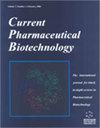黄芪多糖通过激活 AMPK/JAK/STAT3/Arginase-1 信号通路对小鼠实验性自身免疫性脑脊髓炎的保护作用
IF 2.2
4区 医学
Q4 BIOCHEMISTRY & MOLECULAR BIOLOGY
引用次数: 0
摘要
研究目的本研究旨在探讨黄芪多糖(APS)对自身免疫性脑脊髓炎的保护作用及其机制。研究方法将C57BL/6小鼠随机分为空白对照组、EAE组和APS干预组(n=15/组)。通过主动免疫建立实验性自身免疫性脑脊髓炎(EAE)小鼠模型。用苏木精-伊红(HE)和鲁克索尔快蓝(LFB)染色评估脊髓的病理变化。免疫荧光染色法测定了各组小鼠脾脏组织中 CD11b+ Gr-1+ 髓源性抑制细胞(MDSCs)的数量。免疫荧光双染法检测各组脊髓和脾脏中精氨酸酶-1的表达。用ELISA检测脾脏中TNF-α、IL-6和精氨酸酶-1的水平。采用 Western 印迹法检测 AMPK/JAK/STAT3/Arginase-1 信号通路的蛋白表达。结果显示APS干预后,APS组小鼠自身免疫性脑脊髓炎的发病率明显低于EAE组,APS干预可明显延缓EAE小鼠的发病时间,小鼠神经功能缺损评分明显低于EAE组(P <0.05)。APS干预可减少EAE小鼠的髓鞘丢失,改善炎症反应。此外,APS还能诱导脾脏中CD11b+ GR-1 + 骨MDSCs的表达,增加脊髓和脾脏中精氨酸酶-1的表达。这项研究进一步证明,APS 可通过激活 AMPK/JAK/STAT3/Arginase-1 信号通路来保护 EAE 小鼠。结论APS干预后,EAE小鼠的髓鞘脱失和炎症反应得到了有效控制。APS通过激活MDSCs促进精氨酸酶-1的分泌,并通过激活AMPK/JAK/STAT3/精氨酸酶-1信号通路抑制CD4+T细胞,从而改善了EAE小鼠的临床症状和疾病进展。 结论:APS是一种有效的抗炎药物:成功建立了EAE动物模型。APS干预后,EAE小鼠的髓鞘脱失和炎症反应得到了有效控制。APS通过激活MDSCs促进精氨酸酶-1的分泌,并通过激活AMPK/JAK/STAT3/精氨酸酶-1信号通路抑制CD4+T细胞,从而改善了EAE小鼠的临床症状和疾病进展。本文章由计算机程序翻译,如有差异,请以英文原文为准。
The Protective Effect of Astragalus Polysaccharide on Experimental Autoimmune Encephalomyelitis in Mice by Activating the AMPK/JAK/STAT3/Arginase-1 Signaling Pathway
Objective: This study aimed to investigate the protective effect and mechanism of Astragalus polysaccharide (APS) on autoimmune encephalomyelitis. Methods: C57BL/6 mice were randomly divided into the blank control group, EAE group, and APS intervention group (n=15/group). The Experimental Autoimmune Encephalomyelitis (EAE) mouse model was established by active immunization. The pathological changes in the spinal cord were evaluated by Hematoxylin-eosin (HE) and Luxol Fast Blue (LFB) staining. The number of CD11b+ Gr-1+ myeloid-derived suppressor cells (MDSCs) in the spleen tissues of mice in each group was determined by immunofluorescence staining. The expression of Arginase-1 in the spinal cord and spleen of each group was detected by immunofluorescence double staining. The TNF-α, IL-6, and Arginase-1 levels in the spleen were detected by ELISA assay. A western blot was used to detect the protein expression of the AMPK/JAK/STAT3/Arginase-1 signaling pathway. Results: After the intervention of APS, the incidence of autoimmune encephalomyelitis in mice of the APS group was significantly lower than that in the EAE group, and the intervention of APS could significantly delay the onset time in the EAE mice, and the score of neurological function deficit in mice was significantly lower than that in EAE group (P < 0.05). APS intervention could reduce myelin loss and improve the inflammatory response of EAE mice. Moreover, it could induce the expression of CD11b+ GR-1 + bone MDSCs in the spleen and increase the expression of Arginase-1 in the spinal cord and spleen. This study further demonstrated that APS can protect EAE mice by activating the AMPK/JAK/STAT3/Arginase-1 signaling pathway. Conclusion: After the intervention of APS, myelin loss and inflammatory response of EAE mice were effectively controlled. APS promoted the secretion of Arginase-1 by activating MDSCs and inhibited CD4+T cells by activating AMPK/JAK/STAT3/Arginase-1 signaling pathway, thus improving the clinical symptoms and disease progression of EAE mice. conclusion: The EAE animal model was established successfully. After the intervention of APS, myelin loss and inflammatory response of EAE mice were effectively controlled. APS promoted the secretion of Arginase-1 by activating MDSCs and inhibited CD4+T cells by activating AMPK/JAK/STAT3/Arginase-1 signaling pathway, thus improving the clinical symptoms and disease progression of EAE mice.
求助全文
通过发布文献求助,成功后即可免费获取论文全文。
去求助
来源期刊

Current pharmaceutical biotechnology
医学-生化与分子生物学
CiteScore
5.60
自引率
3.60%
发文量
203
审稿时长
6 months
期刊介绍:
Current Pharmaceutical Biotechnology aims to cover all the latest and outstanding developments in Pharmaceutical Biotechnology. Each issue of the journal includes timely in-depth reviews, original research articles and letters written by leaders in the field, covering a range of current topics in scientific areas of Pharmaceutical Biotechnology. Invited and unsolicited review articles are welcome. The journal encourages contributions describing research at the interface of drug discovery and pharmacological applications, involving in vitro investigations and pre-clinical or clinical studies. Scientific areas within the scope of the journal include pharmaceutical chemistry, biochemistry and genetics, molecular and cellular biology, and polymer and materials sciences as they relate to pharmaceutical science and biotechnology. In addition, the journal also considers comprehensive studies and research advances pertaining food chemistry with pharmaceutical implication. Areas of interest include:
DNA/protein engineering and processing
Synthetic biotechnology
Omics (genomics, proteomics, metabolomics and systems biology)
Therapeutic biotechnology (gene therapy, peptide inhibitors, enzymes)
Drug delivery and targeting
Nanobiotechnology
Molecular pharmaceutics and molecular pharmacology
Analytical biotechnology (biosensing, advanced technology for detection of bioanalytes)
Pharmacokinetics and pharmacodynamics
Applied Microbiology
Bioinformatics (computational biopharmaceutics and modeling)
Environmental biotechnology
Regenerative medicine (stem cells, tissue engineering and biomaterials)
Translational immunology (cell therapies, antibody engineering, xenotransplantation)
Industrial bioprocesses for drug production and development
Biosafety
Biotech ethics
Special Issues devoted to crucial topics, providing the latest comprehensive information on cutting-edge areas of research and technological advances, are welcome.
Current Pharmaceutical Biotechnology is an essential journal for academic, clinical, government and pharmaceutical scientists who wish to be kept informed and up-to-date with the latest and most important developments.
 求助内容:
求助内容: 应助结果提醒方式:
应助结果提醒方式:


